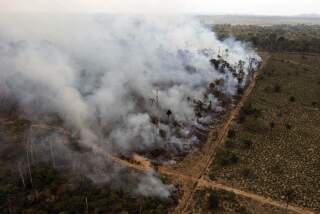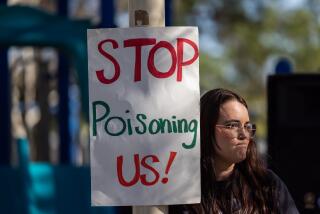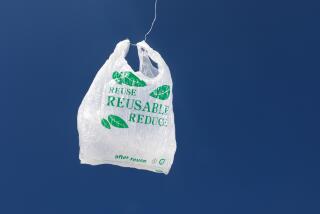Support for fast-tracked bio-cremation bill dissolves under scientific scrutiny, but a revival is brewing
Assemblyman Jeff Miller needed one more vote last spring on his bill to legalize “bio-cremation,” a chemical process that he called a water-based alternative to incineration.
“Going green,” Miller said, holding back a grin, “is not just a way of life.”
His Assembly colleagues laughed and shipped Miller’s one-page proposal to the state Senate with no questions — and unanimous support. Half of the Legislature had signed off on a bill that could have serious environmental effects.
As it turns out, dissolving corpses in chemicals may not be so green. According to one analysis, the process can warp plumbing and singe crematorium workers. A legislative intern discovered the environmental failings that dozens of lawmakers had overlooked.
Miller’s “green funeral” bill is one example of the thousands of measures the Legislature takes up each session. Many slip through with little examination.
Deliberations can hinge on emotions and catch phrases as much as on fact, and sometimes they end more quickly than a discussion of where to grab lunch. One debate on the cremation bill lasted less than a minute.
Miller (R-Corona) said he was eager to embrace innovation after a funeral director in his district approached him about bio-cremation. The assemblyman saw jobs and a new industry for recession-wracked California -- and a way to help curb the state’s greenhouse gas emissions.
Supporters say the process is significantly cleaner than traditional cremation, which uses fossil fuels to burn corpses and emits a variety of pollutants.
“I was trying to help a local business owner provide an alternative market for their business,” said Miller, vice-chairman of the Assembly Committee on Environmental Safety and Toxic Materials. “We tried to learn as much as we could about it with not a lot of history here in the United States and a limited amount of manufacturers that make the equipment.”
The process was developed in Europe in the 1990s as a method of disposing of cows infected with mad-cow disease. Funeral homes would place corpses in a pressurized chamber filled with water and lye and heat the chamber to 370 degrees.
After about three hours, all that remains is bone in a soup of salt and amino acids. The fragments can be ground into ash and the thick, coffee-colored liquid poured down the drain.
“There are no recognizable body parts in the discharged effluent,” an executive from Matthews International, a leading manufacturer of cremation equipment, assured lawmakers in an informational packet.
The procedure caused intense debate in New Hampshire, which legalized bio-cremation, or alkaline hydrolysis, in 2006 and banned the practice two years later.
“I don’t want to send a loved one ... down the drain to a sewer treatment plant,” said New Hampshire state Rep. John Cebrowski, before joining his colleagues in a vote to uphold the ban in 2009.
In New York, legislators dubbed a similar measure in their state “Hannibal Lecter’s bill.”
California lawmakers didn’t have the stomach for much debate on the issue.
“Don’t wanna talk about it,” Assemblywoman Connie Conway (R-Tulare), then the acting chair of the appropriations committee, said in April as Miller approached the podium to address the panel about the bill. “Somebody wanna move this so we don’t have to talk about it?”
Miller launched into his speech anyway. But after 20 seconds, a committee member interrupted him with a motion to pass the bill. The committee then moved the measure to the Assembly floor on a 15-0 vote.
In May, the legislation landed on the desk of Amber Hartman, a science fellow interning on the state Senate Environmental Quality Committee. With little to no technical information in the file, Hartman, fresh from Johns Hopkins University with a doctorate in biology, asked Miller’s office for more data on bio-cremation. What she received raised red flags, especially concerning the leftover liquid.
While an independent report showed disposal was safe for a top medical research facility like the Mayo Clinic, with its own wastewater system, Hartman worried about the impact on the state’s aging sewer pipes. In a bill analysis in May, she said the Mayo samples exceeded legal limits for hazardous waste in California. Something so corrosive, she said, could warp metal pipes and burn crematorium workers.
An aide to Miller was shocked. Equipment makers had insisted the leftover liquid was safe enough to drink, he said.
“It dissolves a human body in three hours,” Hartman replied.
Miller immediately yanked his bill from the legislative roster — only to reintroduce it in December. He and his aides heaped praise on Hartman, who is now a scientific advisor in the Obama administration.
“A few questions were raised that forced us to go back and do a little additional research,” Miller said.
He has spent months meeting with state regulators, local water boards and funeral directors to address environmental and worker safety concerns, he said.
Bio-cremation companies have assured him that the acidity of the remaining solution can be reduced, Miller said. His bill has been revised to require funeral homes to obtain permits from local water districts before using the process and to minimize the dissolving chemical.
“Whatever it takes to get us there, I’m willing to do,” Miller said.
His bill is tentatively scheduled for another hearing next month.
More to Read
Start your day right
Sign up for Essential California for news, features and recommendations from the L.A. Times and beyond in your inbox six days a week.
You may occasionally receive promotional content from the Los Angeles Times.






